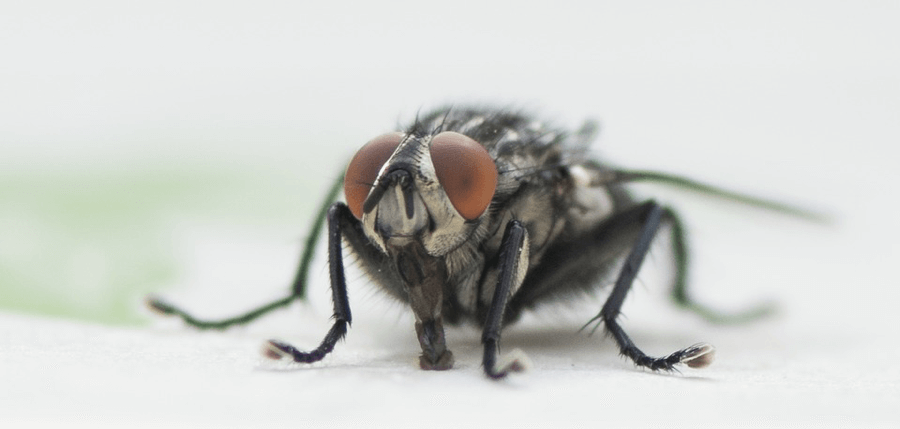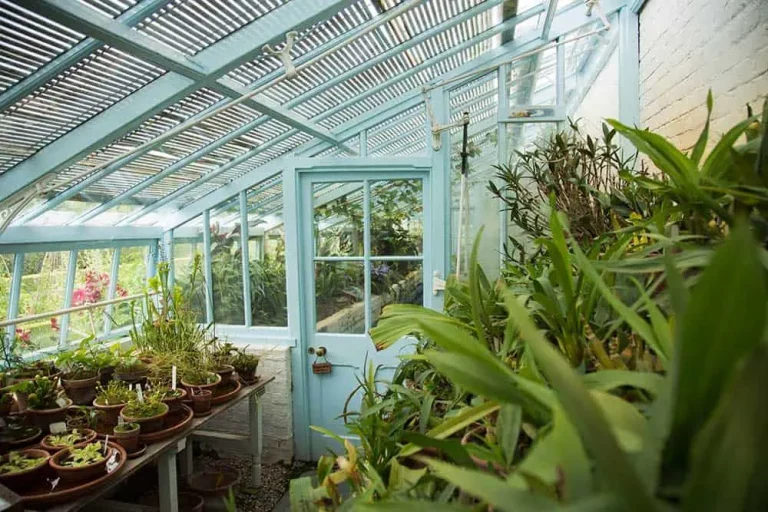If you live in an off-grid home, chances are you know all too well the frustration of dealing with pests that can damage your property and disrupt your peaceful life.
Traditional pest control methods often rely on harmful chemicals that can be detrimental to the environment and human health.
There are many DIY pest control methods that really work for off-grid homes, allowing you to protect your property without compromising your values or the health of our planet.
We’ll explore some of these effective and eco-friendly solutions so you can enjoy a pest-free life in harmony with nature.
Seal all entry points
Seal all cracks and crevices around your home, including windows, doors, and vents, to prevent pests from entering. Use caulk or expanding foam to fill any gaps.
These openings provide an opportunity for pests to gain entry into your home, so it is important to block them.
You can use caulk or expanding foam to fill any gaps.
Caulk is a flexible sealant that can be applied to both vertical and horizontal surfaces, while expanding foam is a great option for filling larger gaps.
It expands to fill the space and then hardens to create a durable seal.
Be sure to seal all entry points, including electrical and plumbing openings, as these can also provide a point of entry for pests.
Consider sealing any gaps around your home’s foundation and any other areas where pests may try to enter.
By sealing all entry points, you can greatly reduce the risk of pest infestation in your home.
Keep a clean home
Keep your home clean and tidy, as pests are attracted to food and clutter. Regularly clean and disinfect surfaces, especially in areas where food is prepared and stored.
To keep your home free from pests, it is essential to maintain a clean and tidy environment.
Pests are attracted to food and clutter, so regular cleaning and disinfecting of surfaces is important, especially in areas where food is prepared and stored.
Start by regularly wiping down countertops, sinks, and stovetops with soap and warm water to remove any food residue or spills.
Sweep and mop floors to remove any debris or crumbs.
Pay particular attention to areas where food is stored, such as pantries and cabinets, and regularly clean and disinfect these spaces as well.
It’s also important to keep your trash cans clean and covered to prevent pests from being attracted to the odors.
By maintaining a clean and tidy home, you can greatly reduce the likelihood of pest infestations and keep your living space healthy and safe.
Eliminate standing water
Standing water can attract pests, so eliminate any sources of standing water around your home, such as pet water dishes, flower vases, and clogged drains.
Eliminating standing water around your home is a important step in preventing pest infestations.
Standing water provides an ideal environment for pests like mosquitoes, flies, and rodents to breed and multiply.
Therefore, it is essential to remove any sources of standing water, such as pet water dishes, flower vases, and clogged drains.
For instance, make sure to empty pet water dishes regularly, and replace the water in flower vases with fresh water every few days.
Check your home’s drains regularly to ensure they are not clogged, which can cause water to accumulate and attract pests.
By eliminating standing water, you can significantly reduce the risk of pest infestations and maintain a healthier and pest-free living environment.
Use natural repellents
Certain plants, such as lavender and mint, can repel pests. Plant these in your garden or bring them inside to repel pests. You can also use essential oils, such as peppermint and lemongrass, to repel pests.
Looking for a natural solution to repel pests in your garden or home?
Consider incorporating plants with repellent properties into your space!
Lavender and mint are both excellent options to repel pests, and you can plant them in your garden or bring them inside as a potted plant.
Not only will these plants add a lovely scent to your space, but they will also help keep pests at bay.
Essential oils such as peppermint and lemongrass can be used to repel pests.
Simply mix a few drops of the oil with water and spray it around your space to keep pests away.
By incorporating these natural repellents into your space, you can effectively keep pests under control without resorting to harsh chemicals.
Take action today and start enjoying the benefits of a pest-free space!
Use diatomaceous earth
Diatomaceous earth is a natural, non-toxic substance that can be used to repel and kill pests. Sprinkle it around the perimeter of your home and in areas where pests are found.
Using diatomaceous earth is a simple yet effective way to repel and kill pests in and around your home.
This natural, non-toxic substance is made up of the fossilized remains of tiny aquatic organisms called diatoms.
When sprinkled around the perimeter of your home and in areas where pests are found, diatomaceous earth works to dehydrate and ultimately kill any unwanted pests that come into contact with it.
This makes it an excellent solution for dealing with ants, spiders, cockroaches, and other common household pests.
To use diatomaceous earth, simply sprinkle it evenly over the affected areas, making sure to reach all corners and crevices where pests may be hiding.
For best results, reapply as needed to maintain a barrier against pests.
You can use diatomaceous earth in conjunction with other natural pest control methods, such as sealing entry points and using essential oils, to create a comprehensive pest control solution.
With its non-toxic and environmentally friendly properties, diatomaceous earth is a safe and effective solution for anyone looking to keep their home pest-free.
Create a pest-repelling garden
Plant pest-repelling plants, such as basil and chili peppers, in your garden to repel pests. You can also use marigold and nasturtium to repel nematodes and whiteflies.
To create a pest-repelling garden, you can plant a variety of pest-repelling plants, such as basil, chili peppers, marigold, and nasturtium.
These plants have natural compounds that repel pests, including nematodes and whiteflies.
Basil, for example, contains eugenol, a compound that repels a wide range of pests, including aphids, mites, and whiteflies.
Chili peppers, on the other hand, contain capsaicin, which repels nematodes and other pests.
Marigold and nasturtium are also effective at repelling nematodes and whiteflies.
By incorporating these plants into your garden, you can create a naturally pest-repellent environment that reduces the need for chemical pesticides and promotes a healthy and thriving garden.
These plants can also attract beneficial insects, such as ladybugs and lacewings, that prey on pests, further enhancing the garden’s pest control.
Use beneficial insects
Beneficial insects, such as ladybugs and lacewings, can be used to control pest populations. You can purchase these insects at gardening stores and release them in your garden.
Using beneficial insects is a highly effective and environmentally friendly way to control pest populations in your garden.
These insects, such as ladybugs and lacewings, feed on pests like aphids, whiteflies, and spider mites, helping to reduce their populations and prevent them from causing damage to your plants.
You can purchase these beneficial insects at your local gardening store or online, and release them in your garden.
For the best results, release the insects in the morning or late afternoon, when the pests are most active.
Be sure to release enough beneficial insects to make a noticeable impact on the pest population, but not so many that they become overwhelmed by the pests they are trying to control.
With proper care and attention, beneficial insects can be a valuable addition to your garden ecosystem, helping to keep pest populations under control and promoting healthy plant growth.
Use traps
Use traps to capture and eliminate pests. For example, you can use sticky traps to capture cockroaches and fly traps to capture flies. Place traps in areas where pests are most active.
One effective way to get rid of pests in your home is to use traps.
Sticky traps can be used to capture cockroaches, while fly traps can be used to capture flies.
These traps are placed in areas where pests are most active, such as near food sources and entry points.
By placing traps in these locations, you can actively capture and eliminate pests before they have a chance to multiply and cause further damage.
For example, sticky traps can be placed under appliances, in corners, and near food sources to catch cockroaches.
Fly traps, on the other hand, can be placed near windows and doors to capture flies.
By regularly checking and replacing traps, you can ensure that pests are effectively eliminated and prevent them from returning.
Want More? Dive Deeper Here!
Hey there! If you’re the type who loves going down the rabbit hole of information (like we do), you’re in the right spot. We’ve pulled together some cool reads and resources that dive a bit deeper into the stuff we chat about on our site. Whether you’re just killing time or super into the topic, these picks might just be what you’re looking for. Happy reading!
- IPM- Scouting and Monitoring for Pests in Commercial Greenhouses | Oklahoma State University
- Pest Management for Herb Bedding Plants Grown in the Greenhouse | Integrated Pest Management
- (PDF) Managing Pests Around the Home
- (PDF) Microsoft Word – ANSWERS_3
- Increasing the Reach of Integrated Pest Management Through Community Partnerships | OSU Extension Service






